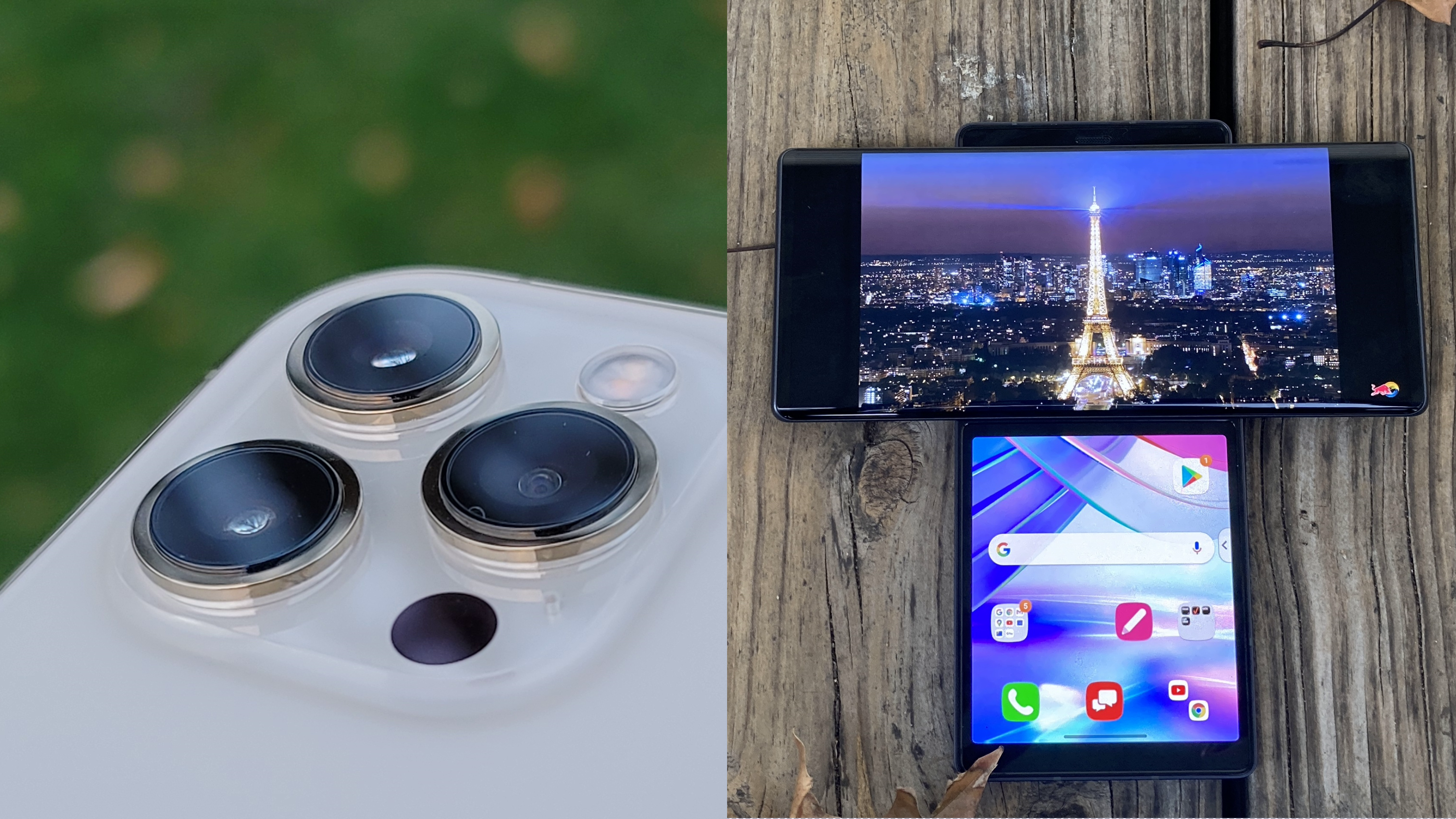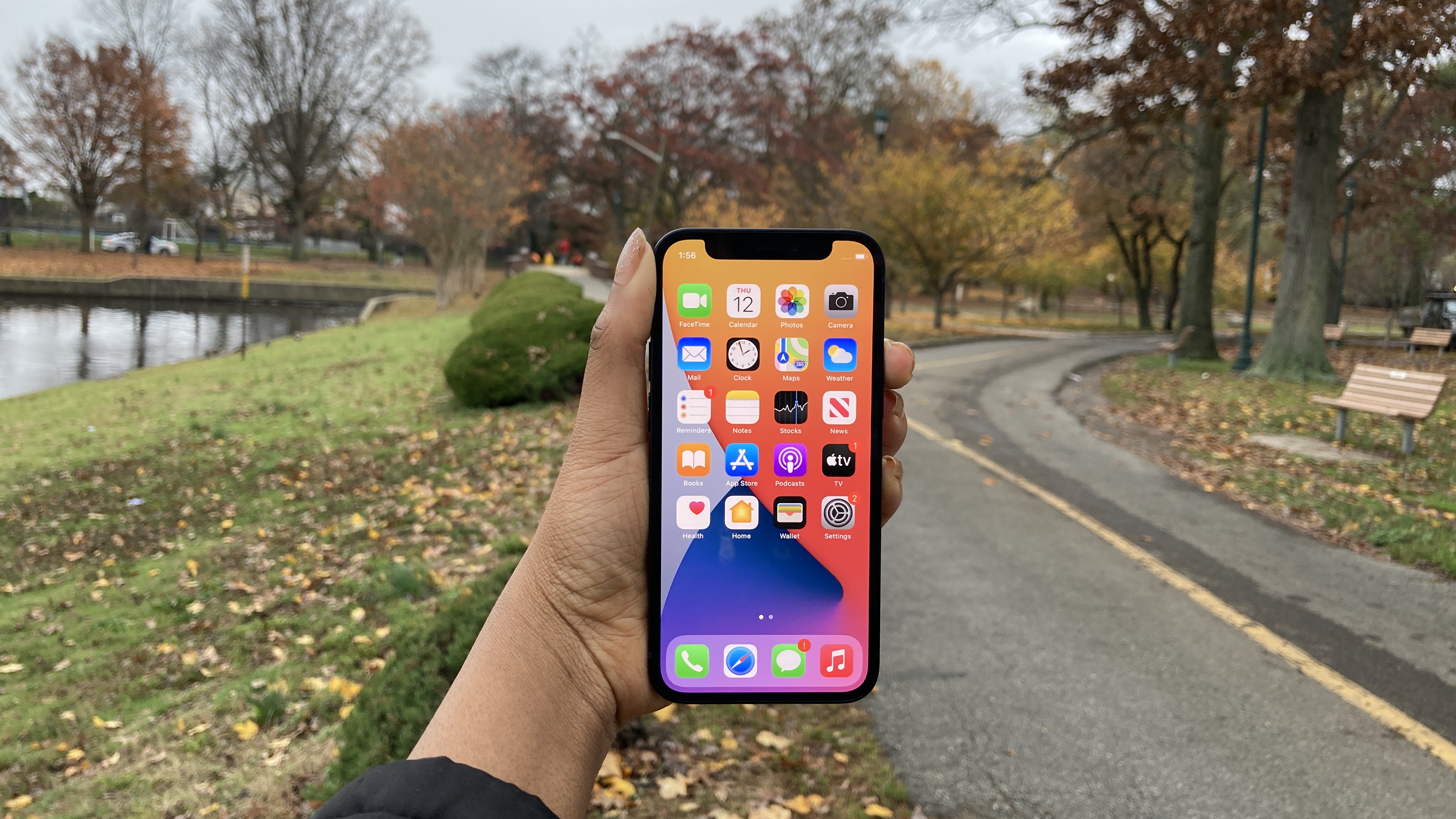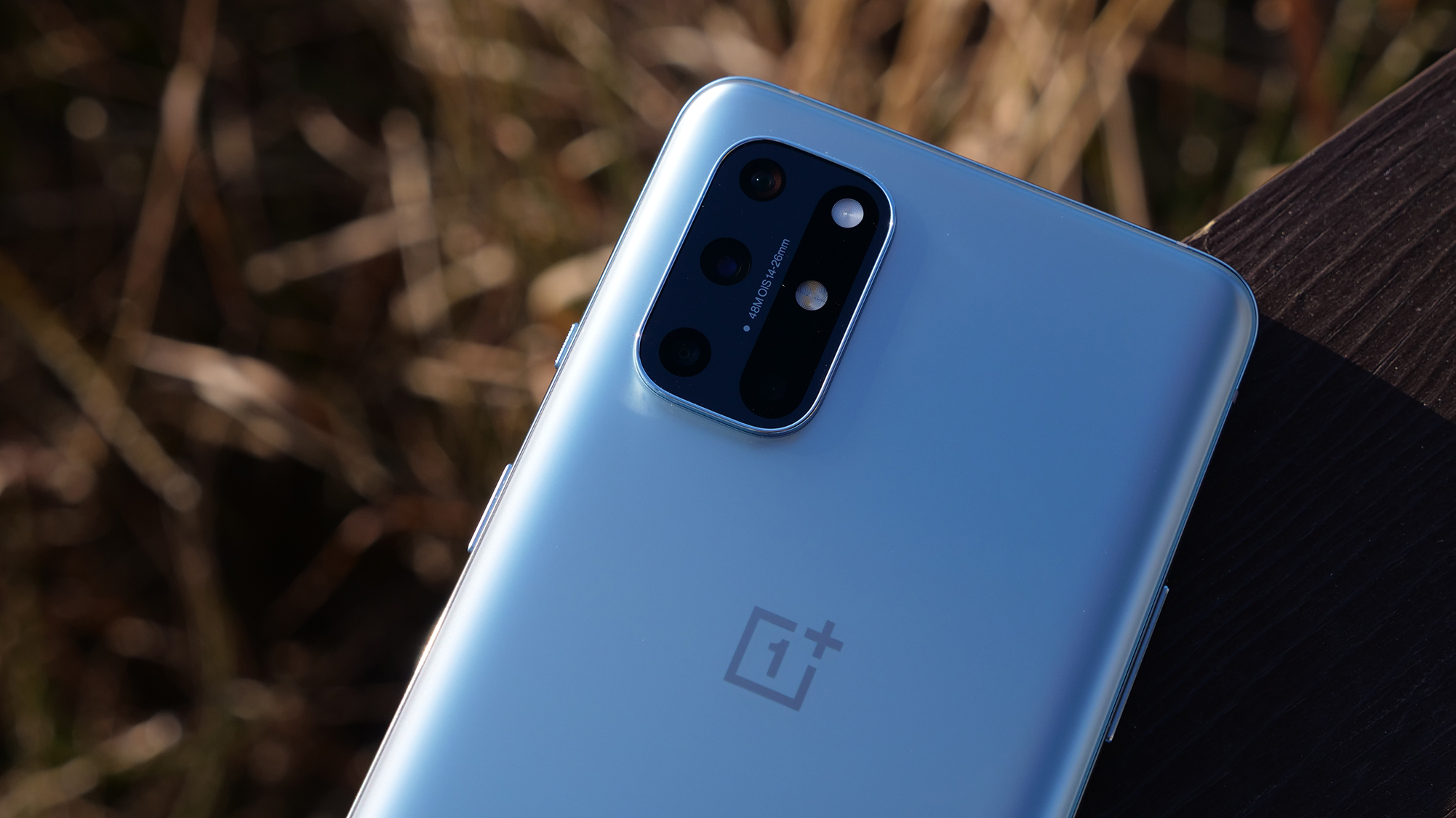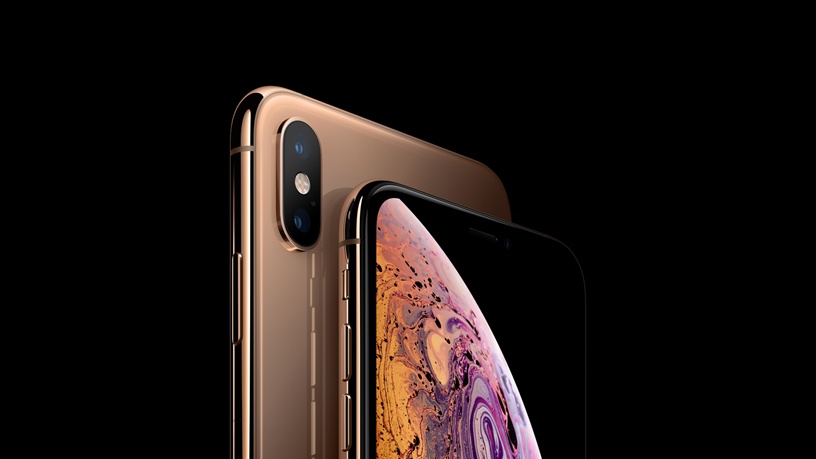Smartphone trends of 2020 that must die
Hide your iPhones, hide your Androids — I’m comin’ for ‘em!

iPhones and Androids — please step inside my office. I’d like a word with you.
Smartphones are all beginning to look like replicas of each other with clunky camera bumps, superfluous lenses and monstrously large displays. After reviewing three buzzworthy phones in under two weeks — the iPhone 12 mini, iPhone 12 Pro and the LG Wing — I couldn’t help but spot a myriad of 2020 smartphone trends that should ne’er see the light of day in 2021 and beyond.
There are some phone trends that we embrace with open arms, such as edge-to-edge, OLED displays, innovative charging technologies and Herculean processors. However, after gathering the valued thoughts and opinions of the Laptop Mag team, there’s a consensus among my colleagues of terrible trends that need to be buried alongside long-forgotten flip phones, Sidekicks and BlackBerrys.
Here are the 2020 smartphone trends that must die.
The prevalence of phablets
The jumbo-sized Samsung Galaxy S20 Ultra and the Note 20 Ultra are both pushing seven inches in terms of display size. If smartphones get any larger, the 7.9-inch Apple iPad Mini might shout, “Now wait a minute! I’m the tablet here. Stay in your lane, peasants!”

Personally, I’m a huge fan of obnoxiously large displays — I love spacious screen real estate. Netflix streaming, internet browsing and light gaming are far more visually appealing on a stupendous screen. However, after asking others’ thoughts on the iPhone 12 mini, a 5.4-inch munchkin among today’s towering phones, folks told me they actually miss the days of petite, palm-fitting phones.
I suppose they made good points about massive smartphones: they’re unwieldy, they don’t fit in your pocket, they’re uncomfortable in smaller hands, and they attract too much attention. I’m willing to endure all of that, though, for a hypnotizing, colorful and large display, but many don’t agree. “Phones these days are too damn big!” a colleague told me after gushing about the iPhone 12 mini. “The mini is the phone of my dreams.”
Sign up to receive The Snapshot, a free special dispatch from Laptop Mag, in your inbox.

Despite being a detractor of dwarfish displays, the people have spoken and I must begrudgingly add phablets as a 2020 smartphone trend that must die.
Lots of lame lenses
As one of my favorite tech YouTubers Marques Brownlee once tweeted, “1 good camera > 4 ok cameras.”

From a marketing standpoint, I understand why this may not translate well to the average smartphone consumer who typically subscribes to “the more, the merrier” point of view. As such, tech giants cash in on the multi-camera craze to remain au courant in the smartphone world. But let’s be honest, multiple lenses don’t necessarily lead to better photos.
Case in point: we recently reviewed the OnePlus 8T, which received a four-star rating for its gorgeous 120Hz display, breakneck charging speeds and strong performance. The device, however, has not two, not three, but four rear lenses: 48-megapixel wide, 16MP ultra-wide, 5MP macro and 2MP monochrome. Oh, and let’s not forget the 16MP front-facing camera.

Our staff writer Sean Riley deemed these cameras “average,” adding that the quintuple-camera array is excessive. You’d think all five cameras would work in harmony to produce stunning photos, but aside from megapixels, aperture and multiple lenses, software optimizations and AI play a large role in making your pictures look visually pleasing. A triple-camera phone with top-notch software might be better than a device overloaded with five cameras — don’t be dazzled by lens count.
Ugly notches and thick bezels
I am convinced that even Apple knows its notches are unsightly because the tech giant once photoshopped it away — well, more like disguised it with strategic wallpaper — on marketing ads for the iPhone XS.

The deceptive iPhone XS marketing campaign impelled two people to sue Apple for “swindling” them into pre-ordering the device, which they believed was notchless. When the plaintiffs received the iPhone XS, they were so repulsed by the ugly notch, they felt the only way they could be recompensed for the eye sore they suffered is to slap Apple with a lawsuit.
Two years later, Apple hasn’t learned its lesson and the iPhone 12 series still sports a hideous notch. Apple fans have gaslit me by saying, “Aw, come on! It’s not that bad. You don’t even notice it!” One day, I’d like to extend the top bezels of their TVs so that it eats into their displays — let’s see how “unnoticeable” it is.

The Microsoft Surface Duo is another phone with disturbances to its screen real estate, but this time, it’s not an ugly notch — it’s the thick bezels. On one hand, I understand that Apple and Microsoft may not want to deal with the engineering nightmares of implementing front-facing cameras on bezel-less phones, on another, it’s Apple and Microsoft — I’m sure they can figure something out. The LG Wing has a pop-up camera and Samsung Galaxy Note 20 Ultra has an Infinity-O display; a little innovation could eliminate hideous notches and bezels.
Expensive phones with 60Hz displays
Once you’ve been spoiled by the luxuries of a 120Hz refresh-rate display, you’ll never want to look back — it’s zippier, smoother and more fluid than your typical 60Hz smartphone. If I spent $1,000 or more on a phone in 2020, I’d feel cheated if it did not sport a 90Hz or higher panel.

The pricey Wing, Surface Duo and iPhone 12 Pro Max are bank-breaking phones that don’t have high refresh-rate displays. I’m inclined to give the Wing and Surface Duo a pass because the engineering prowess of a dual-screen display smartphone is enough to drive up the price — even without the bells and whistles of snazzy screens. However, it’s difficult to excuse the iPhone 12 Pro Max.

The iPhone 12 Pro models were reportedly poised to have 120Hz displays, but the tech giant allegedly had trouble accessing driver ICs to deliver a variable refresh rate, which NotebookCheck says is crucial for preserving battery life. Instead of delaying the launch to wait for the right components, Apple went full steam ahead with a $1,099, 60Hz iPhone 12 Pro Max. Meh! Let’s hope the trend of pricey 60Hz smartphones ends in 2020.
Flawed, faulty foldables
The Samsung Galaxy Z Fold 2 is one of the few foldable smartphones on the market with glowing reviews for its massive 120Hz screens, spacious cover display and impressive tablet mode.

Other foldables, such as the Surface Duo and the 2020 Motorola Razr, have been hit-or-miss among smartphone pundits. Many praised the Surface Duo for its avante-garde hardware and book-like design, but were critical about its buggy UI. Motorola seemed to be riding on hope that it would attract a nostalgia-drunk audience that would overlook its overpriced, underpowered device.
Compared to its Samsung Galaxy Z Flip rival, the 2020 Razr has an older processor, less RAM, less storage, a smaller screen, lower resolution, fewer cameras, a smaller battery and a heavier chassis. Yikes! The foldable, flippable Razr just couldn’t stand up to the competition with its measly specs and $1,499 launch price.

To be clear, I don’t want to see fewer foldables. In fact, in my personal opinion, dual-screen displays and flippy devices are one of the best smartphone trends of 2020. However, I want to see fewer flawed foldables. Some smartphone makers (ahem, the Motorola) seemed to have tunnel vision on creating bendy form factors while neglecting other quality features that make the phone worth purchasing. Other foldable projects, such as the Surface Duo, seemed rushed to meet deadlines as opposed to ensuring that final-production models are consumer-ready.
Bottom line
There are 2020 smartphone trends I absolutely love, such as waterfall displays, AR via time-of-flight sensors, heightened concern for user privacy. Hell, I even love that there are fewer ports on phones, making room for a future of wire-free peripherals. Freedom!
But for the love of all things holy, please let 2020 be the end of ugly notches, thick bezels, flagship phones with 60Hz displays and flippy failures. I could also do without all the 5G hawking. However, I can’t help but have a little bit of a soft spot for jumbo phones — let’s hold on to those for a little while longer.
Kimberly Gedeon, holding a Master's degree in International Journalism, launched her career as a journalist for MadameNoire's business beat in 2013. She loved translating stuffy stories about the economy, personal finance and investing into digestible, easy-to-understand, entertaining stories for young women of color. During her time on the business beat, she discovered her passion for tech as she dove into articles about tech entrepreneurship, the Consumer Electronics Show (CES) and the latest tablets. After eight years of freelancing, dabbling in a myriad of beats, she's finally found a home at Laptop Mag that accepts her as the crypto-addicted, virtual reality-loving, investing-focused, tech-fascinated nerd she is. Woot!

